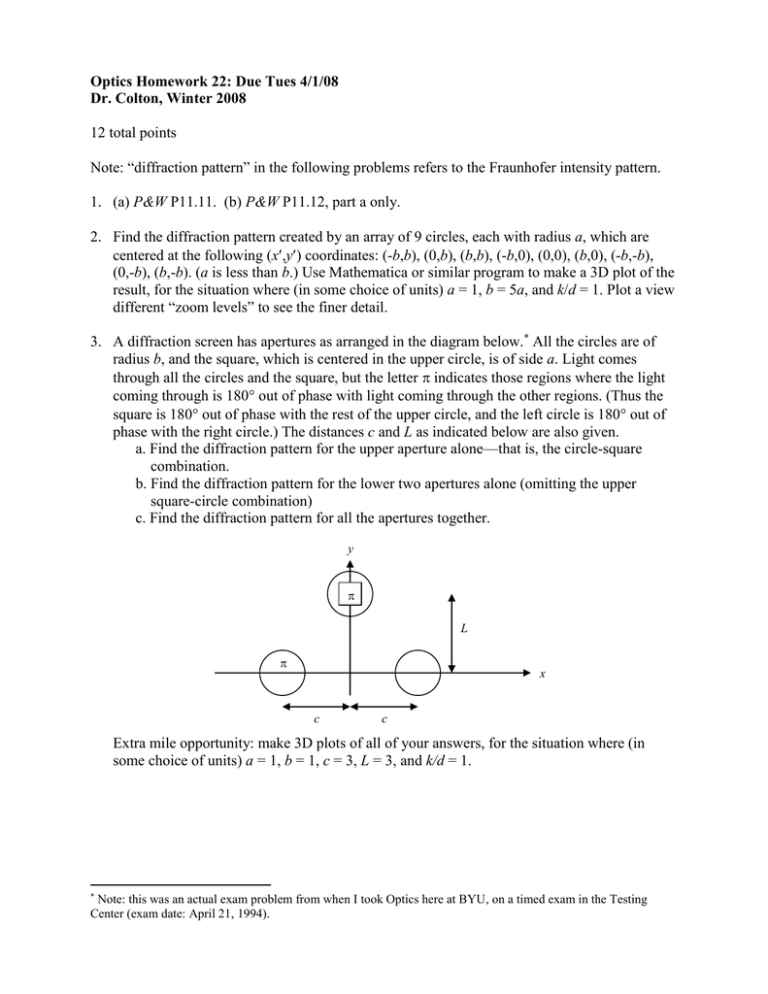hw 22.doc
advertisement

Optics Homework 22: Due Tues 4/1/08 Dr. Colton, Winter 2008 12 total points Note: “diffraction pattern” in the following problems refers to the Fraunhofer intensity pattern. 1. (a) P&W P11.11. (b) P&W P11.12, part a only. 2. Find the diffraction pattern created by an array of 9 circles, each with radius a, which are centered at the following (x,y) coordinates: (-b,b), (0,b), (b,b), (-b,0), (0,0), (b,0), (-b,-b), (0,-b), (b,-b). (a is less than b.) Use Mathematica or similar program to make a 3D plot of the result, for the situation where (in some choice of units) a = 1, b = 5a, and k/d = 1. Plot a view different “zoom levels” to see the finer detail. 3. A diffraction screen has apertures as arranged in the diagram below.* All the circles are of radius b, and the square, which is centered in the upper circle, is of side a. Light comes through all the circles and the square, but the letter indicates those regions where the light coming through is 180 out of phase with light coming through the other regions. (Thus the square is 180 out of phase with the rest of the upper circle, and the left circle is 180 out of phase with the right circle.) The distances c and L as indicated below are also given. a. Find the diffraction pattern for the upper aperture alone—that is, the circle-square combination. b. Find the diffraction pattern for the lower two apertures alone (omitting the upper square-circle combination) c. Find the diffraction pattern for all the apertures together. y L x c c Extra mile opportunity: make 3D plots of all of your answers, for the situation where (in some choice of units) a = 1, b = 1, c = 3, L = 3, and k/d = 1. * Note: this was an actual exam problem from when I took Optics here at BYU, on a timed exam in the Testing Center (exam date: April 21, 1994).




